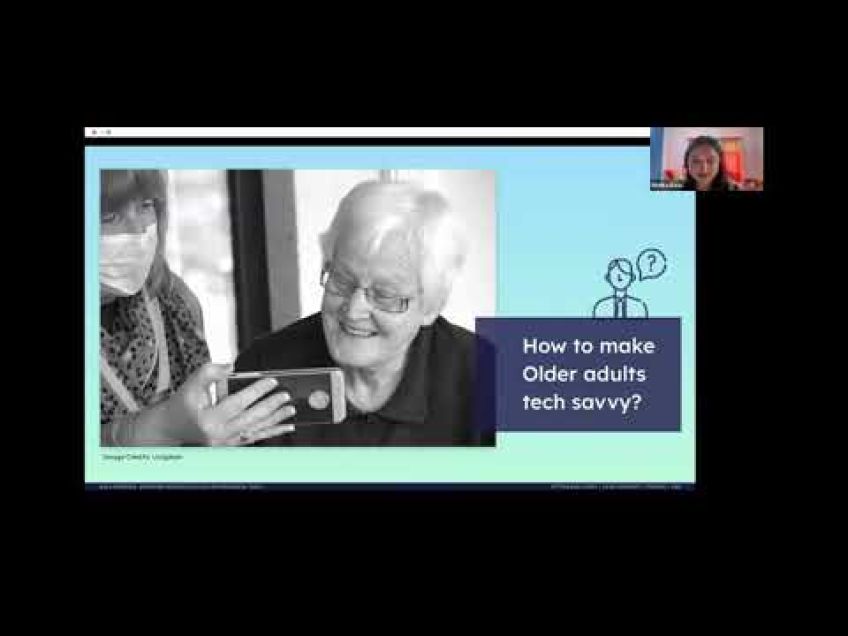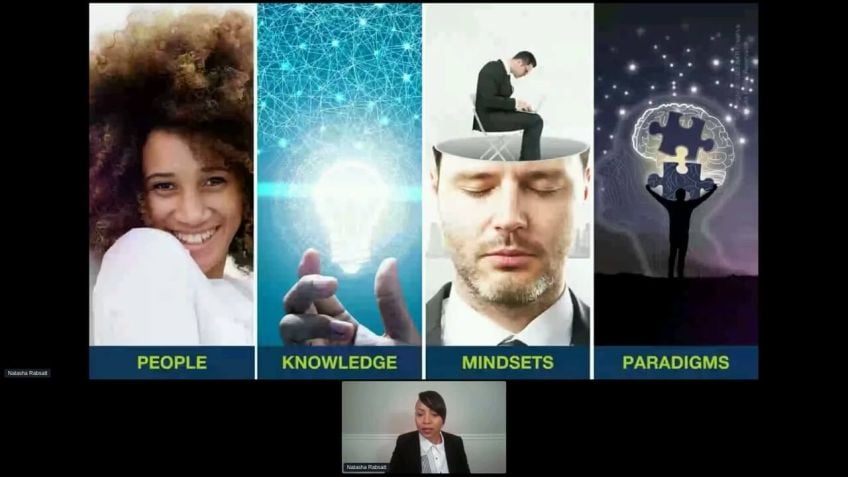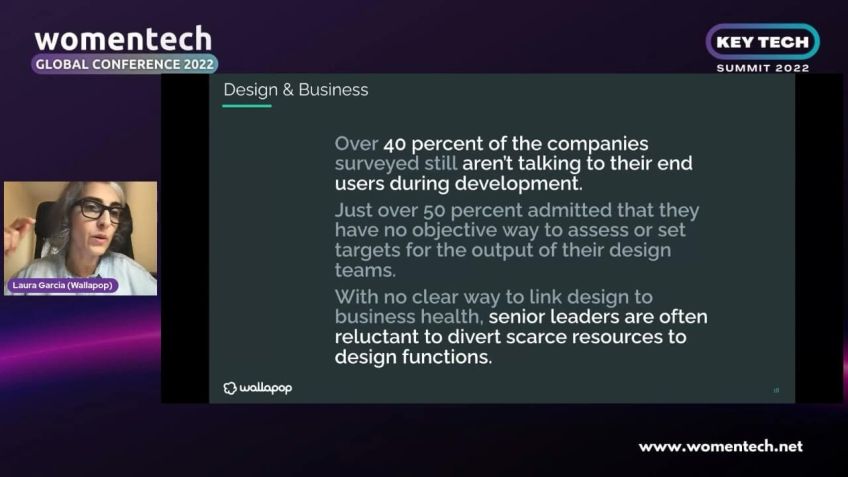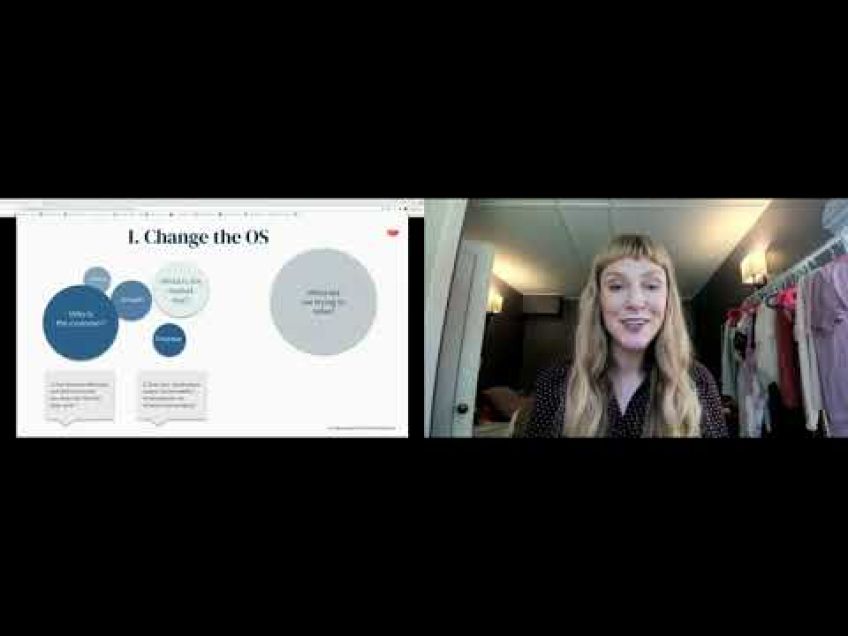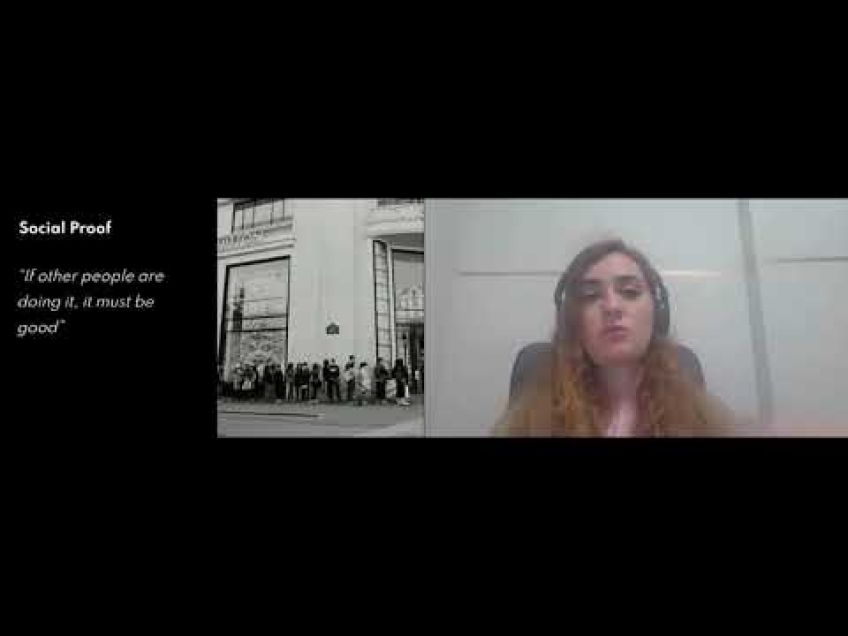Amplifying Creativity: A Remote-First Approach to Solution Ideation Workshops
Optimizing Group Design Ideation Workshops for Better, Creative Designs
Hello! My name is Bree and I’ve been a designer for 8 years now. I've been involved in numerous design ideation sessions and faced various challenges. I hope to share insights and learnings from these experiences to facilitate better and more effective design ideation.
The Core of Design Ideation
The main idea of this article is that group design ideation workshops yield better, more creative designs when diverging asynchronously. Before proceeding, allow me to lay down a couple of definitions. Diverging refers to the ideation stage where we generate a myriad of potential solutions. This is contrasted with converging where we select, refine and combine those ideas we previously generated. When it comes to the terms synchronous and asynchronous ideation, synchronous refers to activities people engage in together in real time. Asynchronous ideation, however, refers to activities people engage in at different times.
Applying Concepts to Creative Ideation Workshops
Usually, the design ideation phase kicks off after research has been conducted and problem statements have been defined. At this stage, a wide range of methodologies and activities might be used for ideation. Among these, one effective technique is collaborative workshops designed to draw out diverse perspectives and ideas from a team.
Traditional design workshops generally kick-off with a review of the problem to be solved. This is typically followed by brainstorming activities and subsequent discussion and voting on the designs. The outcome is ideally a consensus on what should be carried forward to the next stages which include prototyping and validation.
- Facilitating ideation spaces
- Collaborative workshops for diverse perspectives
Transitioning to Digital Design Workshops
However, with the advent of remote working necessitated by current circumstances, these workshops have needed to adapt. For instance, in-person collaboration has been replaced by digital means such as video conference platforms and virtual whiteboards. But there are challenges that come with this shift – lack of necessary materials for sketching, constraints in using digital tools, and difficulties in getting physical sketches from desk to screen, to mention a few.
Revised Ideation Workshop Formats
Faced with these hurdles, I started experimenting with the workshop format. It evolved from a single, synchronous session into essentially three parts: an initial brainstorming meeting, a break for asynchronous ideation, and a final meeting to discuss, share ideas and start converging on the final design. This new approach proved to generate better and more creative ideas.
Using Science to Enhance Creativity
The improved output can be attributed to the way the revised format complements how our brains solve problems. Understandably, the conditions within a 2-hour time-boxed activity might not be optimal to spark the most creative ideas. Moreover, restrictive thinking imposed by synchronous meetings may hinder the so-called "aha" moments of creative realization. Neuroscience and psychology might hold the key to how these moments come about and how we could inspire more of them in our creative ideation processes.
Analytic and Insightful thought
There are two types of thought that our brain engages in - analytic thought and insightful thought. While analytic thought is judicial and systematic, insightful thought is creative and spontaneous. An analytic approach might involve systematically thinking and working through a problem. In contrast, an insightful approach feels like ideas suddenly “pop” into your head, though your mind is actively engaged in problem-solving in the background.
Boosting Idea Generation: Immersion, Incubation and Illumination
The creative process involves navigates three stages Immersion, Incubation, and Illumination. Immersion is when you dive deep into the problem. This is followed by incubation where you stop actively thinking about the problem, giving your subconscious mind a chance to work on it. Finally, Illumination represents the stage where your inspirational idea "pops" into consciousness. Research shows that the quality of creative ideas is a function of quantity. Hence, the more ideas we generate, the higher the chances of producing better ideas. This underlines the significance of effective incubation in the ideation process.
Effective Incubation for More Creative Output
How to make the best out of the incubation stage? Here are some tactics:
- Take breaks: Analytic and insightful thought can't happen simultaneously. Taking breaks provides room for insightful thought to take over.
- Move around: Moderate exercise enhances attention, problem-solving ability, decision-making ability, verbal fluency, and working memory.
- Change your environment: Switching between different and expansive surroundings may put your mind in a more receptive state.
- Follow your body cues: Your energy levels can impact your ideation process. Optimize productivity by aligning cognitive tasks with peak energy periods.
- Note down ideas ASAP : Our minds can easily forget ideas. Capture ideas as and when they appear to keep them from slipping away.
To recap, diverging asynchronously can be a powerful tool in design ideation, yielding more creative and effective designs. It is crucial to ensure the ideation process is staged to maximize analytic thought while also allowing for effective incubation and manifestation of insight.
Reach out to me on LinkedIn if you'd like to delve deeper into these ideas. Happy ideating!
Video Transcription
Thanks. So my name is Bree. I'm really excited to share talk with you. I have been a designer for 8 years now.And in that 8 years, I've done a lot of design ideation and many forms for many problems. Now while this talk is framed around remote group ideation workshops, at its core, it's really just a talk about better design ideation and how to structure your ideation to match how our brains do their best creative thinking. So whether you're working remotely in person or hybrid, if you are ideating or if you are facilitating ideation spaces, the stock is free. So I want this 20 minutes to be worth your time, and my goal is for you to leave with actionable steps that you can apply in your individual or group design ideation. This will be backed by my own personal experience that I'll share, but also a lot of neuroscience and psychology evidence, so you're not just taking my word for it.
And right off the bat, I'll tell you the main idea to this talk that group design ideation workshops yield better, more creative designs when we're diverging asynchronously. But before we get into why this works, let's get on the same page with some shared definitions really quickly. So first is diverging versus converging. Diverging refers to the parts in the ideation process where we're generating lots of different potential ideas or potential solutions, which is typically followed up by converging where we're selecting, combining, and refining from those ideas that we generated. We're also gonna talk a lot about asynchronous ideation compared to synchronous ideation. So what's asynchronous versus synchronous? So For those who are here on this session in the webinar with me live, this is a synchronous presentation. We're here together doing this at the same time. But if someone's watching recording of this webinar later, we're engaging in the same activity, but asynchronously at different times.
So let's start to talk about how these concepts can be applied to our creative ideation workshops. And first, let's establish when we're doing design ideation or solution ID I'll put this in the context of the 5 stages of design thinking, which obviously it's a little bit of an oversimplification, but typically We are starting by doing research and understanding the problem, having clear, defined, shared, problem statements.
And once we know actually what we wanna solve for, that's when we start ideating on how we'll solve it. Typically followed up by prototyping what those solutions could be and what they would work like and testing and kind of going through this process again. So, yeah, does it always look as clean and as linear as this diagram suggests? Surely not. But basically, what this tries to show is that we typically start thinking through potential solutions in this ideate phase after we've done our research and clearly define those problem statements. And when we're doing our design ideation, we might employ different methods or activities to ideate. And one of those activities that we might use are collaborative workshops that delis, solicit diverse range of perspectives and ideas from a team.
Now how these design workshops are structured can take many forms, and there's a lot of different ideation activities that we can use. But typically what I see is some form of what you'll see on this slide where a group gets together and they review the problem they're gonna solve. They might do some sketching or some other brainstorming activity. That's the diverging followed by discussion and sharing and perhaps voting on the designs that they like. That's converging. Ideally, leaving the activity with an idea of what they should carry forward to prototyping and validation. Historically, this is something that happened together in a room when teams were co located. But, when we found ourselves unexpectedly working remotely a few years ago, I had to adjust this in person work shop to work in a digital setting by recreating each step as closely as I could over the computer.
So we substituted a conference room for a Zoom a whiteboard for a fig jam board, but it was really meant to be the same as the in person workshop where we did some independent ideation followed by discussion and then consensus building all in one session in video conference.
But my first attempt at this, I'm sure people have had similar experience, trying to make a in person meeting digital, it didn't go so well. So this is what actually happened when we tried to do this over Zoom. First, people didn't have materials that they needed. Usually a facilitator provides the paper and pens to sketch with, but we were asking people to do this activity at home. And they didn't have the materials that they needed. We also had trouble getting people access to the tools that they needed where their accounts, maybe weren't provisioned for them before the activity. We also had trouble getting for people who were able to sketch at home and had, you know, physical sketches on their desk.
They had a hard time getting those photos from their phones to their computer. And this is already a long meeting. These meetings can run anywhere from an hour, maybe 2 hours for a really big problem. But this already long mating was made longer by all of these hurdles. And while, you know, activities like this can be tiring even without technical issues because ideation work. We want our work to be fun and engaging and rewarding, and this was not. But the ideation phase is really important that we get it right because just like we're investing in doing research to make sure that we're solving the right problems, We wanna invest in our ideation to make sure that we're solving these problems to the best of our abilities and that we really start with a super strong design foundation that we can continued straight from.
And my experience as someone who works in agile tech companies that move very fast is that the ideas that we come out of this phase with initially will prototype will test. We'll learn tweak and iterate, but we're unlikely to scrap everything and start over if it's not performing exactly how we had hoped. And that just motivates me to make sure that we're investing proper time into the ideation phase to make sure that, you know, for these large problems that we're gonna solve, we start with that really strong foundation that will continue to iterate from. And that is what led me to start experimenting with the format in hopes of getting better ideas. So before I thought about experimenting with the format and I was just trying to recreate it digitally, this is what that typical remote ideation workshop look like. It was a 2 hour, maybe maybe 1 hour first small problem, but a synchronous workshop, we all got on the Zoom together.
We go through the process of diverging and converging all in one session. And this is what the format evolved to. So, we split the ideation workshop into essentially three parts, which were two meetings with a break in between. That first meeting is the initial context building and brainstorming meeting with a break in between to give people a few days to continue the ID on their own time. That's the asynchronous diverging portion that we're talking about. After people have had that independent ideation time, we have a meeting a few days later, maybe a week later, but that follow-up meeting where we share, discuss the ideas that we came up with, and start converging and deciding on what we wanna move forward with. And when I started using this format, I experienced that the ideas that myself and my teammates came back with in our second meeting were better and a lot more creative.
And what I've landed on is that when our ideation is restricted with timebox activities like these where we've put so much hope into magic happening in a 2 hour period, it's really counter to how our brains solve problems. So, you know, why did this work? The most obvious reason is, you know, diverging asynchronously is beneficial because we've all experienced the exhaust and, associated with Zoom meetings. And I'm sure many of us, you know, have felt drained and a long Zoom meeting or after a day full of them. Because it increases cognitive load and mental demand. And as tech professionals, we're familiar with the importance of reducing user cognitive load because we know it makes people overwhelmed and inefficient and air prone, but the tools that we're using as we're trying to come up with these solutions are doing the same thing to us.
And I don't think that high cognitive load is the most conducive condition to free flowing and creative ideation. And more than just exhaustion, these meetings aren't set up to spark our best most creative ideas. So design, I, or they they do generate great Right? But it's not a guarantee that in a 2 hour period, you're gonna have your best idea. And my best ideas personally have come outside of activities like these, and, you know, what we call, like, an moment where you have the, you know, you're trying to solve a problem and you have this really good idea just kind of come to you. I think video conferencing and synchronous meetings are really inconclusive to this, but, you know, is this moment a real thing that happens? Is If it's happening, is it random, or is there some way that we can kind of influence or control these for happening, to happen?
Because I'm sure no one has ever complained about having a great idea. And so if we can, why don't we try to make them happen more? So this is where we'll dive more into the ecology and the neuroscience behind creativity, which essentially is the goal of design workshop generating creativity. So our moments real, there's really strong evidence to support it. So neuroscientists have conducted studies measuring brain activity pinpoint the moment that answers pop into our head. So it's really exciting because we have a neural indication of an moment happening. And there are different conditions that lend themselves to us having moments, and part of it is the type of thought that our brain is engaged in. So how we think about and how we solve problems can be split into 2 categories. We have our analytic thought and our insightful thought.
Our analytic thought is judicial, systematic, it's left brain compared to our insightful thought, creative spontaneous, right brain. Analytic thought is kind of what you think of as thinking, and it's what you employ when you sit down to actively think and work through a problem. But insightful thought is I feel like it operates more as a sensation where ideas seem to pop into our minds where we don't actually feel like we're thinking, but our mind still is very much at work. It's just at work in a way behind this unions, often waiting for a stimulus to connect the dots. But both are, you know, part of idea generation. They're a huge part of creativity. They just happen in different ways and at different times. And to talk about how they contribute to our creativity, I think it helps to define creativity. I really like this quote.
It's a quote from 2 psychology and neuroscience professors and authors who study moments, and they define creativity as the ability to reinterpret something by breaking it down into its elements and then recombining those elements in a surprising way to achieve some goal. So with analytic thought, you can think of breaking something down to to its elements and then rearranging those elements until you get to some new idea. But with insightful thought, you might think of breaking something down and as you're kind of looking at your elements, a creative combination of them just kind of appears to you. A good illustration of this are word games like scrabble or in this example, I have a partial screenshot of the game wordscapes. So in this game, you're given a set of letters. So you'll see that circle of letters there, and you need to rearrange all or a subset of the letters in as many ways as you can to form words.
So an analytic approach to this game would be to try to combine these letters in different sequences until you go to work. So d r e l, not a word. D r e u, not a word, but you continue kind of brute forcing your way until you have words appear. An insightful approach is looking at these letters and then just having a sudden realization of how you might combine them. So you look at this and you might see hurdle or hurled or ruled or duel, or you might look at this and not see anything and have start moving them around to try to find them. So while there's a lot more to analytic versus insightful thought, I think work aims are a great illustration of our different ways of problem solving. And as you all know, we are not walking around having these moments of creative genius all the time because we can't constantly be thinking insightfully.
And this is because we employ different types of thought at different points in the creative process. So different books, organizations, thought leaders, everyone has their own varying versions of the creative process with different number of steps, different names for these steps, I like to boil it down to the three eyes, which are immersion, incubation, and illumination. So immersion is when you are immersed in that problem. You're reviewing the research and data, and you're engaging that analytic brain into trying to think through possible ways to solve that problem. That's followed up by incubation, which happens when you stop thinking about or working on solving that problem. And when you stop thinking about it, that's when the loose associations in the back of your mind start to form.
And ideally, this will result in a creative illumination happening where your insightful thought yields a novel and accretive approach to solve that problem. Now what's really important to take away from this is that all three steps, like, this is sequential. All three steps are necessary to have that creative illumination. That analytic thought that you employ when you're immersed in problem is necessary for that creative idea to come later. Research shows us that quality of creative ideas is a positive function of quantity, meaning the more ideas that we generate the higher likelihood that will produce the better idea eventually. And all moments only happen after you've spent time wrestling with the problem and then giving yourself space from it. So when we're talking about adding an asynchronous diverging portion to these design ideation workshops, what we're really trying to do is work in an incubation period.
So we're not you know, in a long synchronous brainstorming session. And this makes incubation extremely important So while it might sound and seem like a passive process, how we incubate is a huge role of whether or not we're gonna generate creative ideas. Because what's happening here is we're trying to spark new pathways in our brains, and there's actionable steps we can do to encourage this to happen. So if we're gonna give ourselves and we're gonna give perhaps our teammates a few days to independently ideate, how do we set ourselves up to have this creative limit So let's walk through some tips on how we can make our incubation more productive and more likely to result in those moments.
So the first tactic is to take lots of break breaks. So analytic and insightful thought can't happen simultaneously. So oftentimes when we stop thinking about one problem, we move on to just thinking about something else, but it's really important that we don't redirect our mind to just some other problem. We need to distract ourselves from our analytic thought in order to move into incubation. So ideally during breaks, you're not engaging your analytic brain, you're trying to get to a state of of rest and reduced awareness and creative insights you might have already experienced are often generated when we have a reduced awareness of our surroundings. So this is why people often have ideas in the shower or rushing their teeth or about to fall asleep. And situations where removing sensory input, whether it's what we are hearing or seeing, you know, in the shower, there's a lot of kind of white noise.
That allows us to focus our attention inward, and which is why we have a lot of interesting thoughts or shower thoughts as they like to call them. The second tactic is to move around. So sitting in a room or at your computer on a Zoom is really detrimental to creativity. So culturally in the US, at least we see mind and body as separate, and we associate thinking with stillness and focus but your cognitive load increases significantly when sitting still and movement on the other hand can be key and you know, moderate exercise was shown to increase attention, problem solving ability, decision making ability, verbal fluency, and working memory.
And we have studies that show when participants are asked to do complex math problems in their heads, and they're getting their brain scanned, that those brain scans show increased cognitive load on those who are asked to not move while thinking. Exercise releases neurochemicals that actually help us complex cognition. So doing things like taking a walk after you spend a lot of time thinking about a problem can be really beneficial to our problem solving and creative abilities. The next tactic is to change your environment. There's a couple ways you could think about changing it. You can seek open environments in expansive surroundings can put our mind in the state to make a creative illumination. Because open environments can make our brain more open to possible connections.
If we go back to that definition of creativity, meaning we break things down into pieces and then combine them in a surprising way, An open environment can put us in the state where we can kind of see more possible ways that we might combine things. Another way to change our environment is not just open environments, but, different environments. So unfamiliar surroundings can put our minds in the state more conducive to creative illumination. So putting yourself in a different place, gives your brain a different perspective or a different way of thinking about a problem. You're breaking a routine, so you might get exposed to a different stimuli that makes you think differently. And that can be what helps spark that new pathway in your brain. This for me means some, like, maybe sometimes I don't work at my desk or in my house.
I might get out and go to a coffee shop, but just getting in a new surround think can really help refresh you and get you thinking a little bit differently. The next cue is or, tactic is to follow your body's cues. So people think differently at different points in the day. Your analytic thought is better at your peak energy while your insightful thought takes over at your low energy. And really what this means is that the best time for you to crank through producing ideas is when you're feeling productive and energized, And when you start to get, you know, slow and groggy, that's a great time to step away and let your insightful brain take over. But when we're scheduling synchronous workshop activities where we all have to do brainstorming or exclusion ideation at the same time. You don't really know how everyone's gonna feel in that moment. So by working in period of asynchronous ideation.
It allows people to incubate ideas during periods where their brain isn't functioning at its peak, which is more likely to get that creative idea coming later. And then lastly, this one isn't really rooted in research, but I find it to be really good advice that you should take note of ideas as soon as they appear. Often the creative idea that you have only exists in the moment that you have it, and you probably won't remember it later. And one creative idea and the active capturing it can be at the start of a train of thought that leads you to your next one. So, you know, if I'm driving and something comes to mind, I'll ask Siri to take a And if I'm about to fall asleep, I'll grab my phone and write it down because it's very unlikely that you're gonna remember that later. And so the act of capturing it can be what gets you great ideas later.
And that's all the tactics that I have, and we are coming up on time soon. So let's put this all together. So we talked about workshop formats. We talked about synchronous versus asynchronous work. We talked about the 3 stages of creativity, and we talked about analytic versus insightful thought. So here's how it all ties together. So this is the old format that I showed you before I broke this one workshop into a multi workshop format, and this is when we did all our ideation in once session. So this one synchronous meeting, we are immersed in the problem the entire time, and that type of workshop is really only set up to leverage our analytic brands. But it doesn't offer us the time and the space needed to generate creative solutions. So when we adapt this workshop into this multi meeting format with a break for an asynchronous ideation in between.
All stages of creativity and both types of thinking can be accessed. I know this is a lot on one slide, so let's walk through it. So in that first meeting, we're starting that diverging process together synchronously. We're in the immersion phase. We're utilizing our analytic brands as a group together. But then by working in a 3 to 5, maybe a week period for incubation after that initial meeting, we're giving our brands the time and space to incubate on these problems. And if we incubate well with some of those conditions that we touched on earlier, we have the best chance of our insightful brain leading us to a creative solution. Then when we come together in our 2nd synchronous meeting to discuss those ideas, we're gonna come back with stronger and more creative designs. So this workshop format works because it's set to take us through all three stages of creativity and maximize our analytic thinking when it matters.
But I'll also say that the specific format that I'm showing you doesn't matter. Like, you could tweak any I ideation activity in whatever way that suits you. To allow for all three stages of creativity, so it certainly doesn't have to look like this. So to go back to that initial idea of the top, I truly believe that group ideation workshops yield better and more creative designs when you diverge asynchronously. It's what I and my teams have experienced. Because it more closely follows the creative process and aligns with how our brains operate. So it's more likely to yield better outcomes when you're employing those tactics for incubation that I shared earlier as well. Alright. So these are my sources that I'll cite. Some of that I read that helped inform this talk. And, this is myself.
Feel free to connect with me on linkedin if you're interested and this is something you wanna chat about. But I'll go ahead and call it there. So thank you, everybody, because I'm reading the chat now. Awesome. I don't know. I think it's, like, 20 minutes. I don't think there's time, so I'll let everyone help to their next session, but thanks so much for joining.

